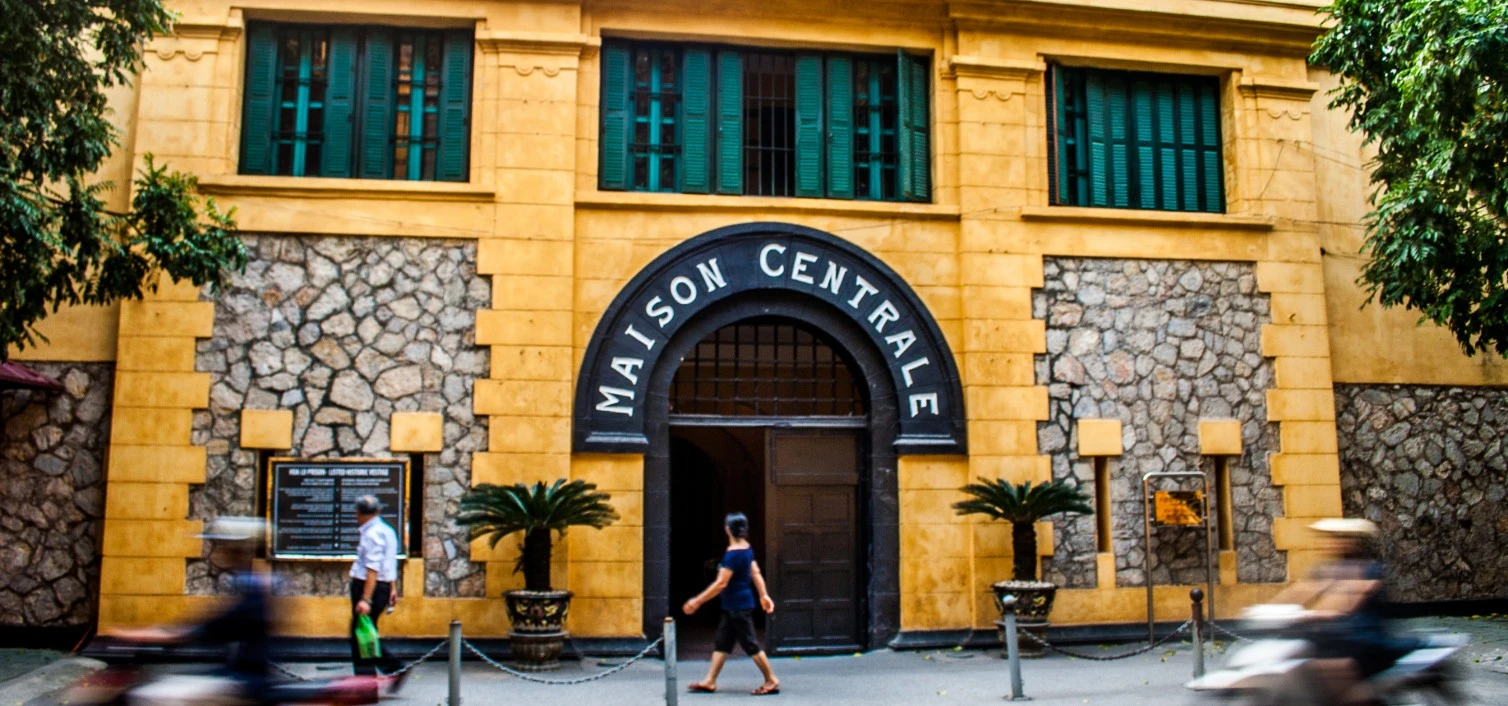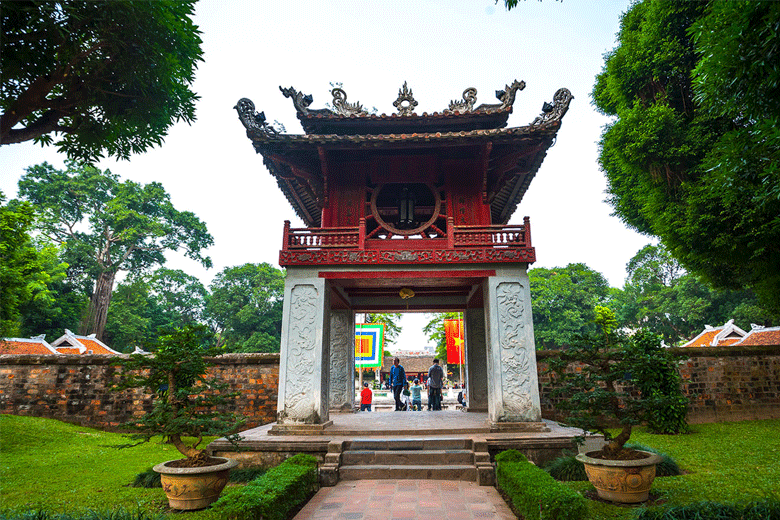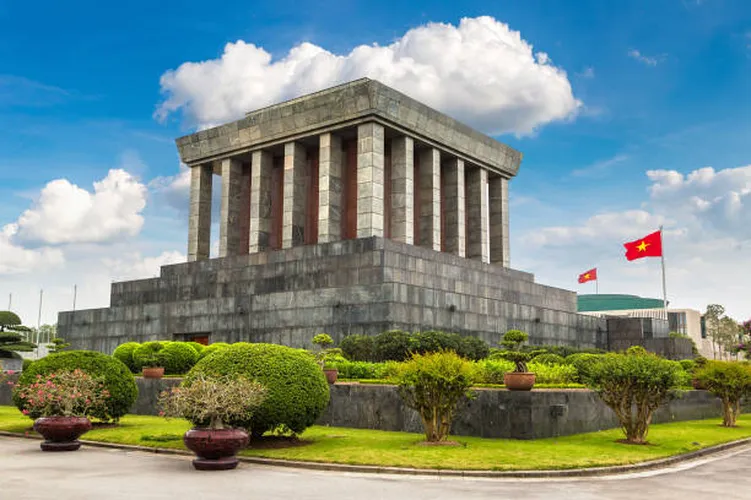The Ho Chi Minh Mausoleum is a sign of how much the Vietnamese people loved and respected Ho Chi Minh as their leader. The Mausoleum is a popular place for tourists to visit in the center of Hanoi. It honors the life and legacy of the man who led the country to independence. It is a place of quiet reverence and solemn reflection.
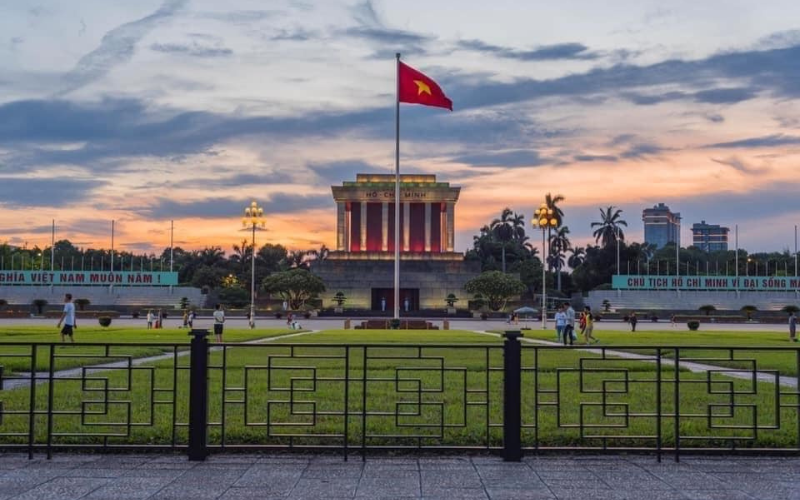
Visitors from all over the world come to pay their respects and learn more about the man who is credited with uniting the country. A visit to the Ho Chi Minh Mausoleum is an unforgettable experience and a must-see for anyone visiting Vietnam. Today, you try to explore this interesting place with vietnamtravelers.com!
Contents
Ho Chi Minh Mausoleum History
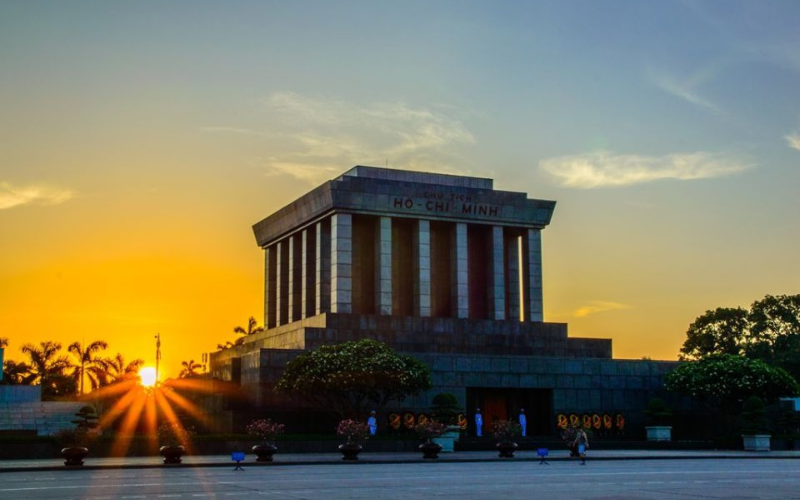
The embalmed body of Ho Chi Minh, who started the Democratic Republic of Vietnam, is buried in the Ho Chi Minh Mausoleum in Hanoi, Vietnam. When it was first built in 1973, the mausoleum was based on Lenin’s Mausoleum in Moscow. Ho Chi Minh’s remains were placed there in 1975, after his death in 1969.
The Ho Chi Minh Mausoleum stands as a powerful symbol of the deep respect and reverence the Vietnamese people have for their beloved leader. It is a monument of great significance.
Since it opened in 1975, Hanoi’s history and culture have brought in a lot of visitors from both inside Vietnam and other countries.
Ho Chi Minh Mausoleum’s Impressive Points
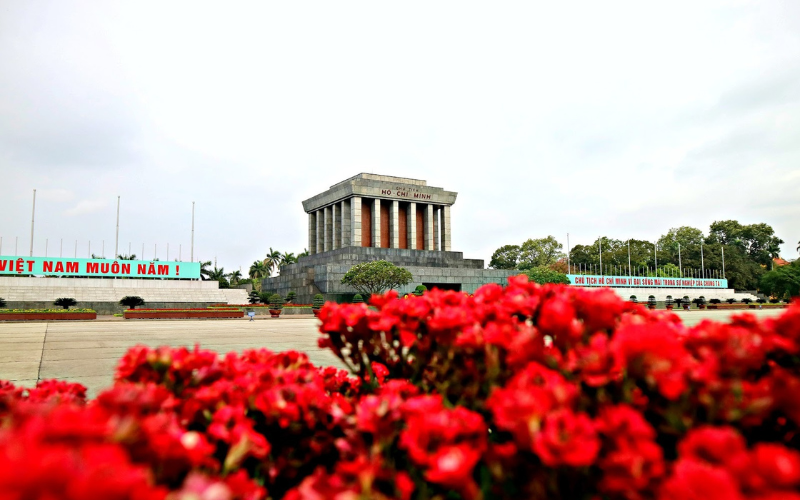
Exterior
The grand mausoleum stands tall, with “CHU TICH HO CHI MINH” boldly engraved on its top. Marble columns encircle the majestic structure, which has a gray granite facade. Inside, 200 sets of doors made from rare wood from all around the country provide a truly remarkable sight.
The marble of the lobby is red and pink and proudly displays President Ho Chi Minh’s gold-plated signature. It also have the phrase “Nothing is more precious than Independence and Freedom.” Two soldiers stand guard hourly in front of the mausoleum, a solemn reminder of the nation’s independence and liberty.
Interior
The remains of the former President of Vietnam are kept in a glass coffin on a bed on top of a stone pedestal in a room made of marble. At any given time, there are always four guards standing vigil in the room.
Surrounding areas
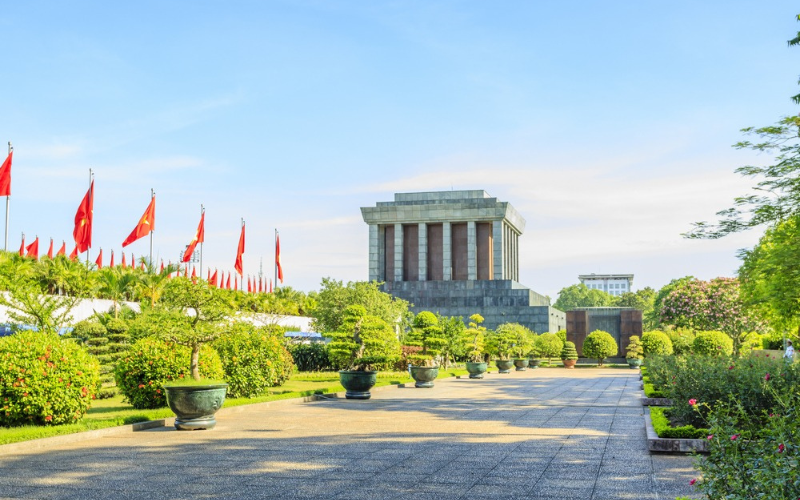
The verdant landscape surrounding Ho Chi Minh’s tomb abounds in more than 250 species of plants. Each carrying a symbolic significance in the many stories of the beloved leader during his lifetime. Every tree and flower therein is a living reminder of his legacy.
Structure
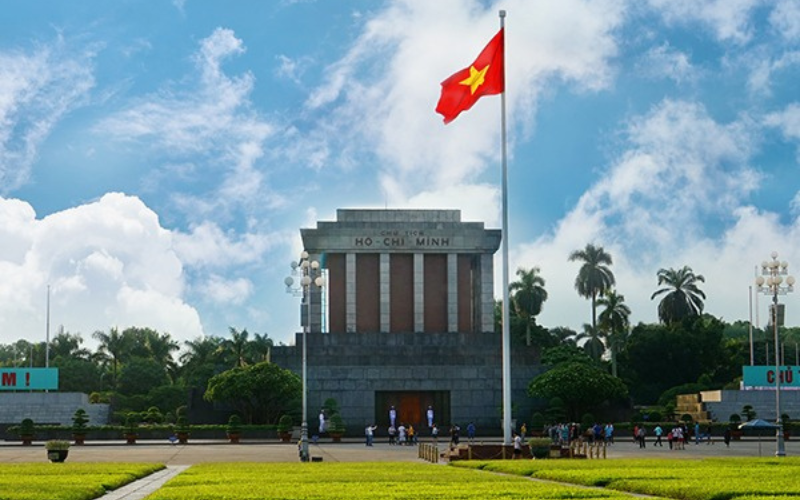
The majestic structure has a width of 41.2 meters (135 ft 2 in) and a height of 21.6 meters (70 ft 10 in). Along with the two platforms, each with seven steps on either side of the mausoleum. A plaza adorns the front of the tomb and has been divided into 240 individual green squares that are connected via paths. This creates a magnificent view for anyone enjoying the parade.
Some useful information about Ho Chi Minh Mausoleum
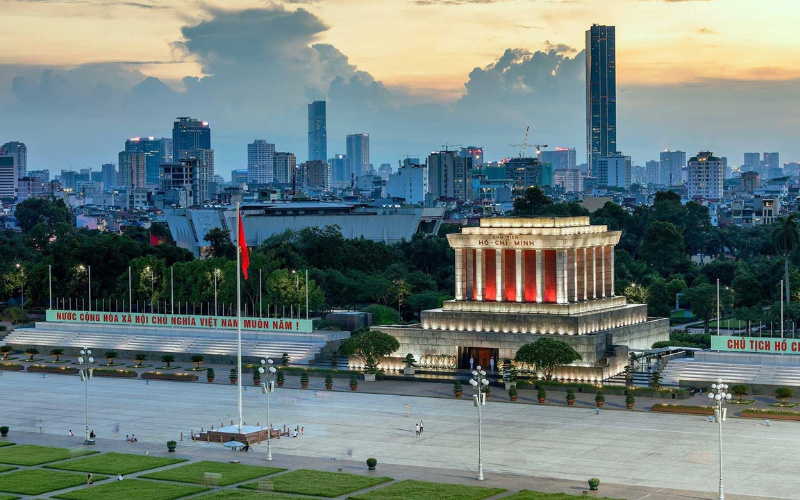
Location
The Ho Chi Minh Mausoleum is located in the heart of Hanoi, the capital of Vietnam. It stands as a tribute to the country’s revolutionary leader, Ho Chi Minh. The mausoleum is an impressive structure, surrounded by gardens and monuments to Ho Chi Minh’s legacy. It is located in 2 Hung Vuong, Dien Bien Ward, Ba Dinh District.
Opening hours
Just open in the morning: on every Tuesday, Wednesday, Thursday, Saturday, and Sunday.
Specific visiting hours:
Season | Month | Specific hours | |
Summer & Fall | Apr 1 – Oct 31 | Tuesday – Thursday | 7:30 a.m – 10:30 a.m |
Saturday – Sunday | |||
| Winter & Spring | Nov 1 – Mar 31 | Tuesday – Thursday | 8:00 a.m – 11:00 a.m |
Saturday – Sunday | |||
| Note: Visitor hours are 30 minutes longer on Saturdays, Sundays, and public holidays. | |||
Special holidays (May 19, September 2, or the first day of the Lunar New Year) fall on Monday or Friday: the Mausoleum remains open.
Yearly maintenance: The mausoleum closes for maintenance from September to November each year.
Means of transportations to the Mausoleum Complex
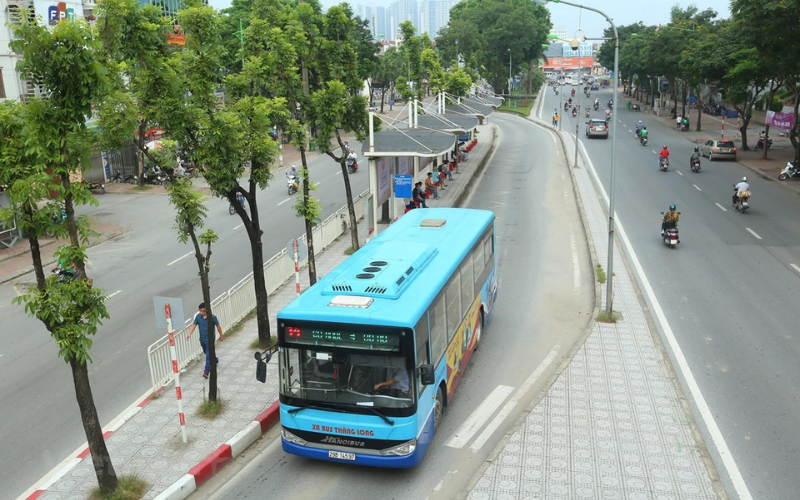
The most common form of transportation to the Ho Chi Minh Mausoleum in Hanoi is by taxi, your own car, or motorbike.
Alternatively, tourists can take the city’s public bus (09, 33, 22, 45, and 50) to reach the mausoleum.
Top tips when visiting Ho Chi Minh Mausoleum
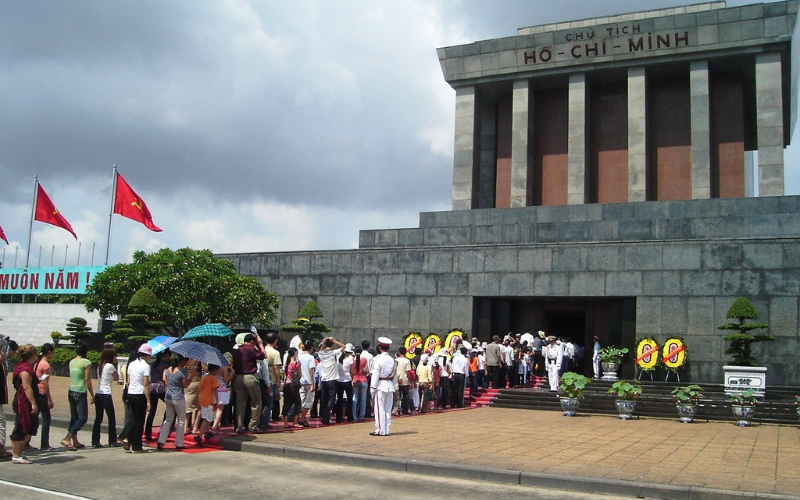
Dress appropriately. Wear clothing that is respectful and covers your shoulders and legs.
Be respectful. The mausoleum is a memorial to Ho Chi Minh, so be sure to show respect for his memory.
Pay attention to photo regulations. Remember that you can’t film, take pictures, or draw in the room where President Ho Chi Minh’s body is in the Mausoleum.
Take your time. Don’t rush through the mausoleum; take your time to appreciate the history and significance of the site.
Plan ahead. Be sure to check the opening times and plan your visit accordingly.
Other tips:
- Put your hat in your right hand.
- Avoid loud noises and touching walls.
- Follow the guard’s instructions.
- Stop pocketing your hands.
- Opening hours of the Ho Chi Minh Mausoleum
What to see around the Mausoleum Complex
Temple of Literature
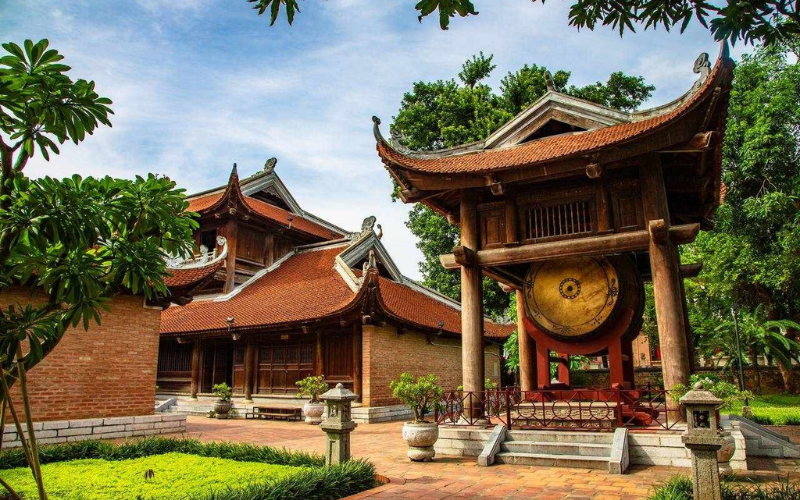
The Temple is a stunning temple complex built in 1070. It is the first national university in Vietnam, where the country’s elite studied philosophy, literature, and law. The Temple of Literature provides a unique glimpse into the Vietnam’s rich cultural history.
Presidential Palace
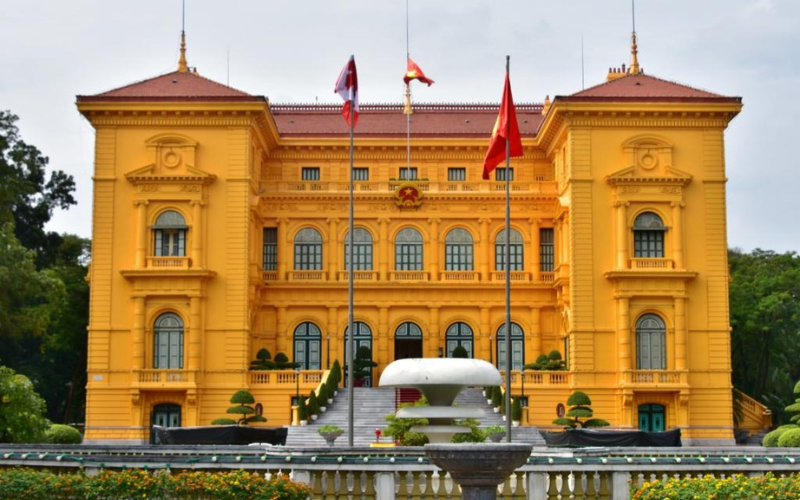
This is the former residence of President Ho Chi Minh. It is a French-style building located in the center of the complex. Ho Chi Minh’s 15-year life and labor are commemorated at the Presidential Palace in Hanoi.
They include political parties, laborers, peasants, and intellectuals. The Palace, fishpond, orchards, and stilt house are all part of this historic site, making it one of the nation’s 23 exceptional monuments.
Ba Dinh Square
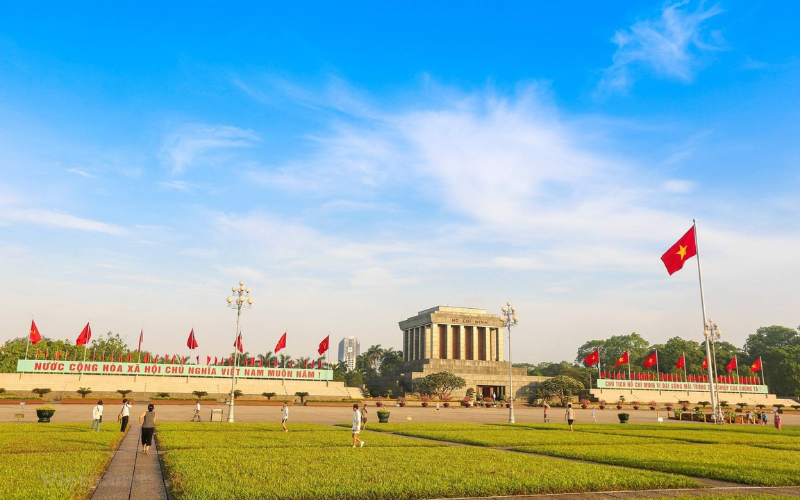
This is the largest square in Vietnam and a popular spot for visitors to the Ho Chi Minh Mausoleum. It is a very important place because on Sep 2, 1945, Ho Chi Minh read the Declaration of Independence of the Democratic Republic of Vietnam there. This was the start of a new Vietnam.
One Pillar Pagoda
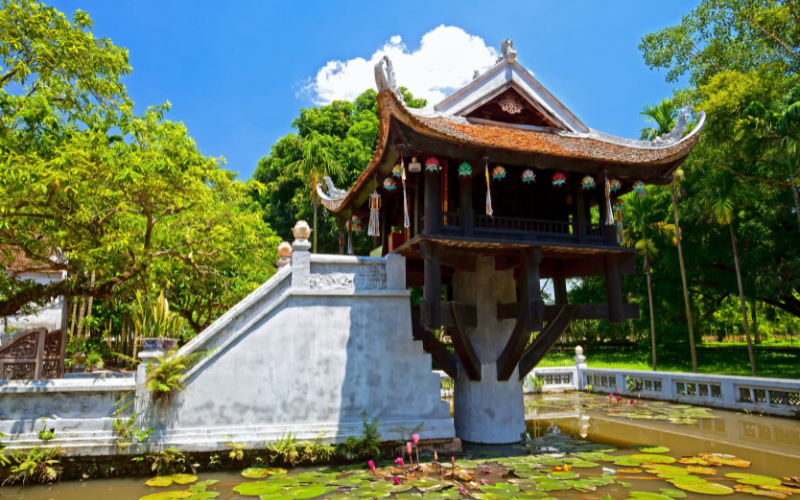
This is a traditional Buddhist temple that was built in the 11th century. The One Pillar Pagoda stands tall like a lotus flower coming out of a pond. It is elegantly set in a rectangular lotus lake. Sadly, it was destroyed by French forces on September 11, 1954. However, Uncle Ho had it renovated in 1955, after Independence Day.
Uncle Ho’s Stilt House
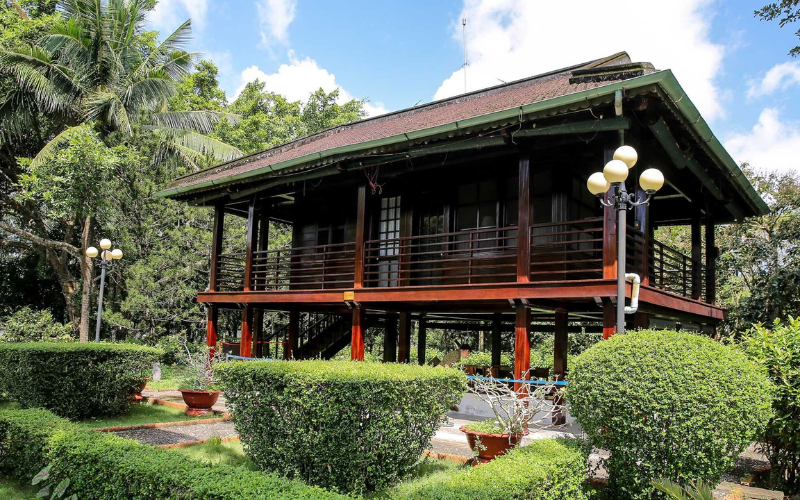
These traditional wooden houses were built by the locals and offer visitors a glimpse into Vietnamese rural life. The two-story house had hibiscus hedges, a fishpond, and exotic fruit trees. Uncle Ho worked and lived in the second room upstairs, and there was a reception room downstairs.
Ho Chi Minh City Museum
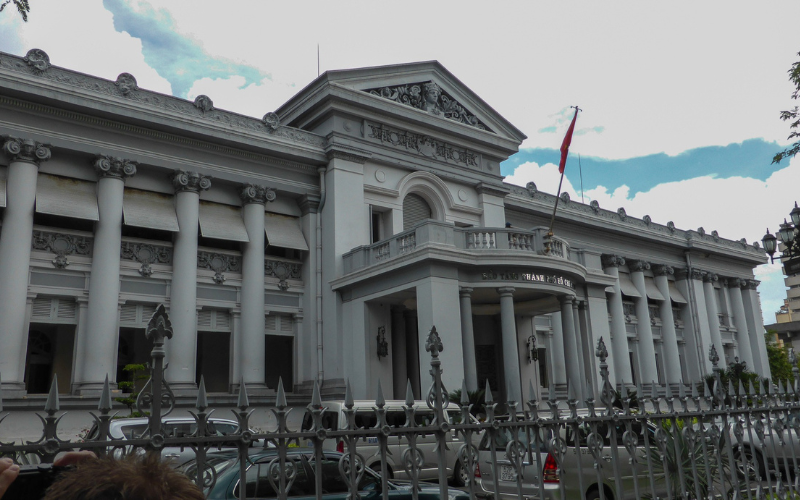
This museum showcases the history of Ho Chi Minh City and Vietnam. For nearly half a decade, the Ho Chi Minh Complex was crafted with a singular purpose: to commemorate the 100th birthday of the revered leader.
Standing at a proud 20 meters tall, the three-story Ho Chi Minh Museum is a remarkable sight to behold. It resembles a stunning white blossom in full bloom.
Besides the above destinations, you can visit other places such as Long Bien Bridge, Hoa Lo Prison, Vietnam Museum of Ethnology,…
Conclusion
The Ho Chi Minh Mausoleum is a unique and remarkable landmark that is sure to leave a lasting impression on any visitor. Its grand and powerful appearance is a tribute to the man who led his people through a hard and turbulent time in history. The mausoleum is a must-see for anyone going to Hanoi, and it will be a rewarding and memorable experience.

